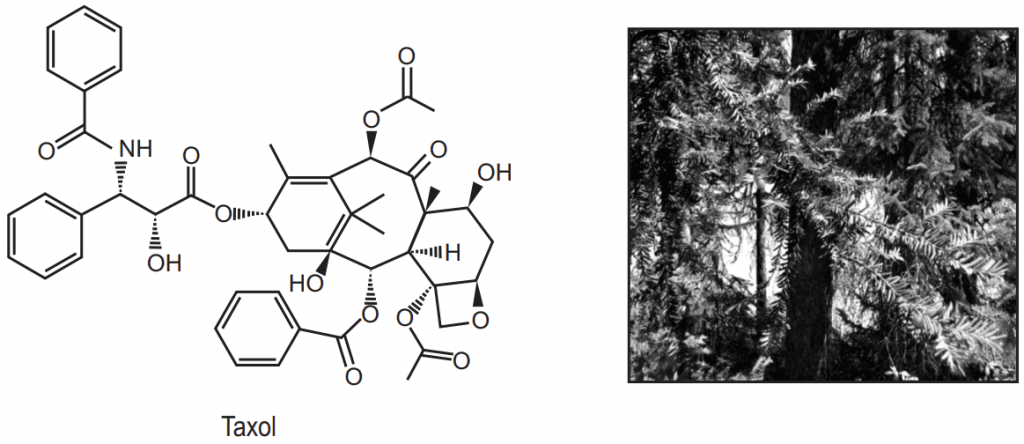Synonyms: Yew, Himalayan Yew, Talispatra.
Biological source: Taxus consists of dried roots, bark, and leaves of various Taxus species i.e. Taxus brevifolia, Taxus baccata, Taxus cuspidata, Taxus Canadensis.
Family: Taxaceae.
Geographical Source: It is mainly found in India, America, and Canada. In India, it is found in the temperate Himalayan region (up to an altitude of 2000 to 3500 meters).
Cultivation and Collection of Taxus
Table of Contents
It is a very slow-developing evergreen tree that belongs to gymnosperm. It grows well in any kind of soil. It can bear bitter cold and grows well in shade as well as in sun. Taxus plants are planted as an ornamental plants in parks and gardens, especially as hedges. They lend themselves to clipping.
Taxol was isolated from the trunk of Taxus brevifolia but the yield was very low (0.01%). That means a plant with 100 years old produces 3 kg bark (or 300 mg taxol). Generally I Kg taxol will be isolated from seven tons of dried bark. The content of taxol in the leaves is comparatively more (as much as 0.1%). The drying process of the plant is very much related to the content of taxol. The drying should be done at 40-50°C.

Description
The Plant: There are eight species in this genus, which is the only one in the Taxaceae family, which are all found in the northern hemisphere. They are characterized by leaves that are flattened limp needles, almost in a single plane, with two yellowish-green stomata bands on the inner side. Male flowers have 6 to 14 anthers-shaped shields and the female part is reduced to an ovule surrounded by scales.
Chemical Constituents of Taxus
Different metabolites are present in the leaves and stem-like saccharides, polysaccharides, and cyclitols, sterols, proanthocyanidins, bioflavonoids, fatty acids, cyanogenetic glycosides, and lignans.
The most important constituents are tricyclic diterpenes with taxane nucleus viz. taxusines, baccatin III, taxagifin, taxine, taxol, pseudoalkaloids.
Uses of Taxus
Taxol inhibits the polymerization of tubulin similar to podophylotoxin and vincristine. It was used to treat ovarian tumors and other cancer. Taxol can be dispensing at the rate of 135-175mg/m2 depending on the indication. Infuse the drug after every three weeks with proper premedication. The toxicity produce by the treatment of taxol is neutropenia, peripheral neuropathy, cardiovascular problems, vomiting, alopecia, nausea, hypersensitivity, etc.
Taxol prevents the spreading of metastatic cancerous cells. Taxol is approved by USFDA for the treatment of ovarian cancer. It is also used in lung cancer, gastric and cervical cancer, head, neck, colon, and prostate cancer.
Make sure you also check our other amazing Article on : Gentian
